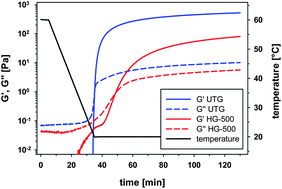Glyoxal modification of gelatin leads to change in properties of solutions and resulting films
Abstract
The influence of different pretreated film forming solutions (

* Corresponding authors
a
Institute of Chemistry—Food Chemistry, Martin-Luther-University Halle-Wittenberg, Kurt-Mothes-Str. 2, Halle/Saale, Germany
E-mail:
marcus.glomb@chemie.uni-halle.de
Fax: +49-345-5527341
Tel: +49-345-5525784
b Faculty of Agricultural Sciences and Landscape Architecture, University of Applied Sciences Osnabrück, Oldenburger Landstraße 24, Osnabrück, Germany
The influence of different pretreated film forming solutions (

 Please wait while we load your content...
Something went wrong. Try again?
Please wait while we load your content...
Something went wrong. Try again?
R. Spanneberg, D. Schymanski, H. Stechmann, L. Figura and M. A. Glomb, Soft Matter, 2012, 8, 2222 DOI: 10.1039/C2SM06659A
To request permission to reproduce material from this article, please go to the Copyright Clearance Center request page.
If you are an author contributing to an RSC publication, you do not need to request permission provided correct acknowledgement is given.
If you are the author of this article, you do not need to request permission to reproduce figures and diagrams provided correct acknowledgement is given. If you want to reproduce the whole article in a third-party publication (excluding your thesis/dissertation for which permission is not required) please go to the Copyright Clearance Center request page.
Read more about how to correctly acknowledge RSC content.
 Fetching data from CrossRef.
Fetching data from CrossRef.
This may take some time to load.
Loading related content
